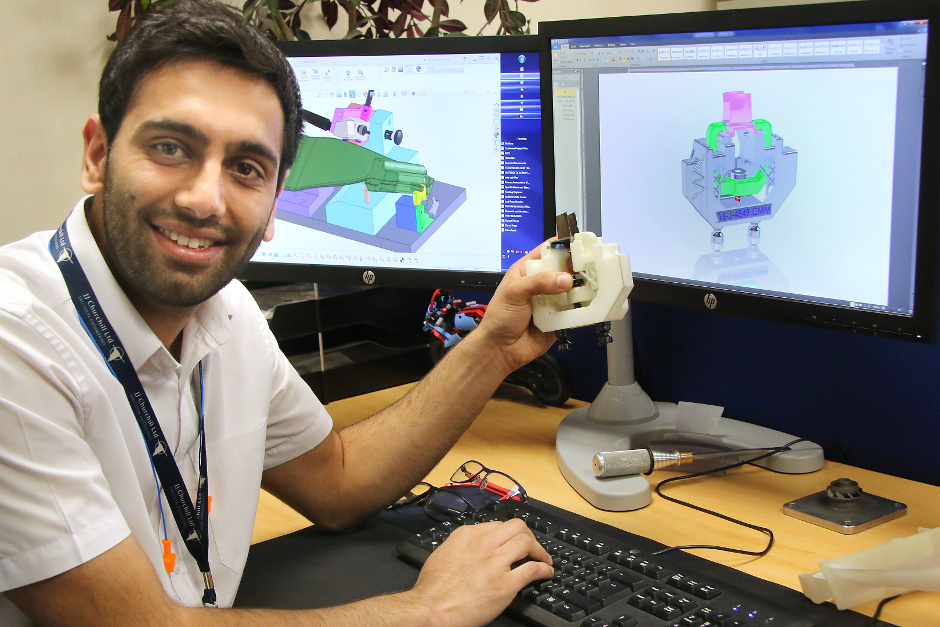
The Market Bosworth-based company worked in partnership with HK3D to produce the fixtures, which are being used for an OEM in the aerospace industry.
According to JJ Churchill, the fixture was needed to hold the components in the most effective orientation for the CMM. It needed to deliver repeatable precision loading and ease of use. Usually a fixture could only be manufactured once the components have already been machined and this process typically took two weeks.
JJ Churchill worked with HK3D to design and deliver a working fixture in three days.
The adoption of additive is also said to have removed a potential bottle neck. Traditional manufacturing prove-out processes follow a linear path, namely: 1) write the CMM programme; 2) wait for components to be machined; 3) prove-out CMM programme; 4) CMM programme for production.
JJ Churchill and HK3D developed an alternative solution for fixturing to remove the bottle necks sometimes encountered in steps 2-3.
Karan Singh, one of JJ Churchill’s manufacturing engineers and the lead in additive manufacturing, said: “The benefits of bringing 3D printing into traditional manufacturing process are huge. In this project, not only did we achieve significant savings in time and money, but our knowledge and capability has rocketed.”
“It made us analyse a problem in different ways and pushed our way of thinking. It has also changed the way I think as a design engineer, and I have found it highly fulfilling. This is a great example of additive and traditional manufacturing working in synergy.”
Managing director Andrew Churchill said: “The adoption of 3D printing and its application to the way JJ Churchill engineers products, fundamentally increases our agility as a business to meet our customers’ new product Introduction timescales, whilst at the time reducing the cost of tooling.”










IET sounds warning on AI doll trend
I agree that we need to reduce cooling water demand for servers. And yes, generative AI consumes a large amount. But what about BitCoins? Their...